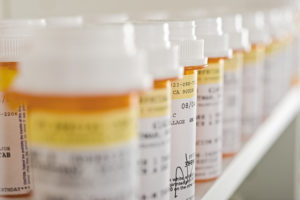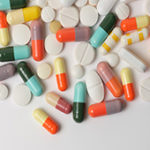
President Biden’s Executive Order on Promoting Competition in the American Economy, 86 FR 36987 (2021), expressed concerns about the patent system being misused to unnecessarily inhibit or delay entry of generic drugs or biologics to the marketplace for years, denying Americans access to lower cost drugs. The President called for action “to help ensure that the patent system, while incentivizing innovation, does not unjustifiably delay generic drug or biosimilar competition beyond that reasonably contemplated by applicable law.”
The Food and Drug Administration (FDA) was charged with the task of identifying any concerns with the patent system being used in such an unjustified way. To this end, the FDA reached out to the U.S. Patent and Trademark Office (USPTO) in a cooperative spirit to promote further interactions to better understand their overlap in work and information, particularly where inconsistent statements might be made to each agency.
In response to the President and the FDA’s outreach, the new Director of the USPTO, Katherine Vidal, published in the Federal Register (87 FR 45764 (July 29, 2022)) a stern reminder regarding the duties of disclosure and reasonable inquiry during examination of a patent application, including reexamination, reissue, and proceedings before the Patent Trial and Appeal Board (PTAB). The justification is to provide examiners and judges with all the material information needed to decide on patentability of a claimed invention. Consequently, more robust and reliable patents should result, which is better for the public.
The Notice reminds us of who has duty to disclose material information and what material information needs to be disclosed. In essence, anyone associated with the prosecution of a patent application or involved in the examination of a patent before the USPTO or PTAB is required to disclose to the patent examiner or administrative law judge information that would be material to the patentability of the claimed invention. Material information could include communications from other government agencies, for example, from the FDA.
The Notice also details what is the duty of reasonable inquiry. For example, a party filing a paper with the USPTO has a duty to perform an inquiry as reasonable under the circumstances, which may include reviewing documents received from another government agency, for example, the FDA. If the document is material to patentability, then the document must be appropriately submitted to the USPTO.
The final section of the Notice is under the heading, “When the Duties of Disclosure and Reasonable Inquiry Arise in Dealings With Other Government Agencies,” which section emphasizes the consistency of statements made to different agencies and the need to correct statements later learned to be incorrect at the time they were made. Activities and publications associated with testing, marketing, and commercialization by a patentee or patent applicant can also be material to patentability and must be disclosed. Examples also include information learned from a generic company filing an Abbreviated New Drug Application (ANDA) and namely, a paragraph IV certification alleging that the patent(s) covering the brand name drug product are invalid. The prior art cited in the ANDA certification must be cited to the USPTO unless cumulative to publications already cited.
Of particular note is the discussion of inequitable conduct when inconsistent positions were taken before the USPTO and the FDA. The Notice details a number of examples of where inconsistent statements led to detrimental effects for the malfeasance. The Notice further warns that attempts to wall off patent practitioners from the FDA lawyers to prevent learning of possible material information are inappropriate and likely will have dire consequences. “By following the guidance in this notice, it is expected that patent applicants can obtain more reliable patent protection and avoid the findings of inequitable conduct and sanctions noted [herein].”
In sum, although all technologies are included, the Notice appears to be directed most specifically to brand name pharmaceutical companies and their dealings with the USPTO and FDA. Is the Notice a shot over the bow of the brand name pharmaceutical companies’ patent filing and prosecution strategies? Is this signaling the beginning of higher scrutiny for their patent applications and the “patent thickets” they create? If so, will such scrutiny permit generics to enter the marketplace earlier, which ultimately could mean cheaper medicines sooner, meeting the Administration’s objectives? Only time will tell.
 Although the second quarter did not feature any life sciences enforcement action by the FTC, there was plenty of news in and around the space. The FTC held a detailed “virtual workshop” as part of its pharmaceutical merger task force and news emerged of a potential Merck-Seagen deal that could set up an interesting test of the FTC’s new enforcement priorities. Finally, the FTC’s recent complaint seeking to stop the proposed Meta/Within transaction offers potential insight into how the new Democratic majority might approach a large pharmaceutical transaction. Antitrust + Competition lawyers Arman Oruc, Andrew Lacy, Sarah Jordan and Elliot Silver discuss these developments in the Antitrust + Competition Life Sciences Quarterly Update.
Although the second quarter did not feature any life sciences enforcement action by the FTC, there was plenty of news in and around the space. The FTC held a detailed “virtual workshop” as part of its pharmaceutical merger task force and news emerged of a potential Merck-Seagen deal that could set up an interesting test of the FTC’s new enforcement priorities. Finally, the FTC’s recent complaint seeking to stop the proposed Meta/Within transaction offers potential insight into how the new Democratic majority might approach a large pharmaceutical transaction. Antitrust + Competition lawyers Arman Oruc, Andrew Lacy, Sarah Jordan and Elliot Silver discuss these developments in the Antitrust + Competition Life Sciences Quarterly Update. On August 16, President Biden signed the Inflation Reduction Act of 2022 into law,[
On August 16, President Biden signed the Inflation Reduction Act of 2022 into law,[ The Goodwin
The Goodwin 